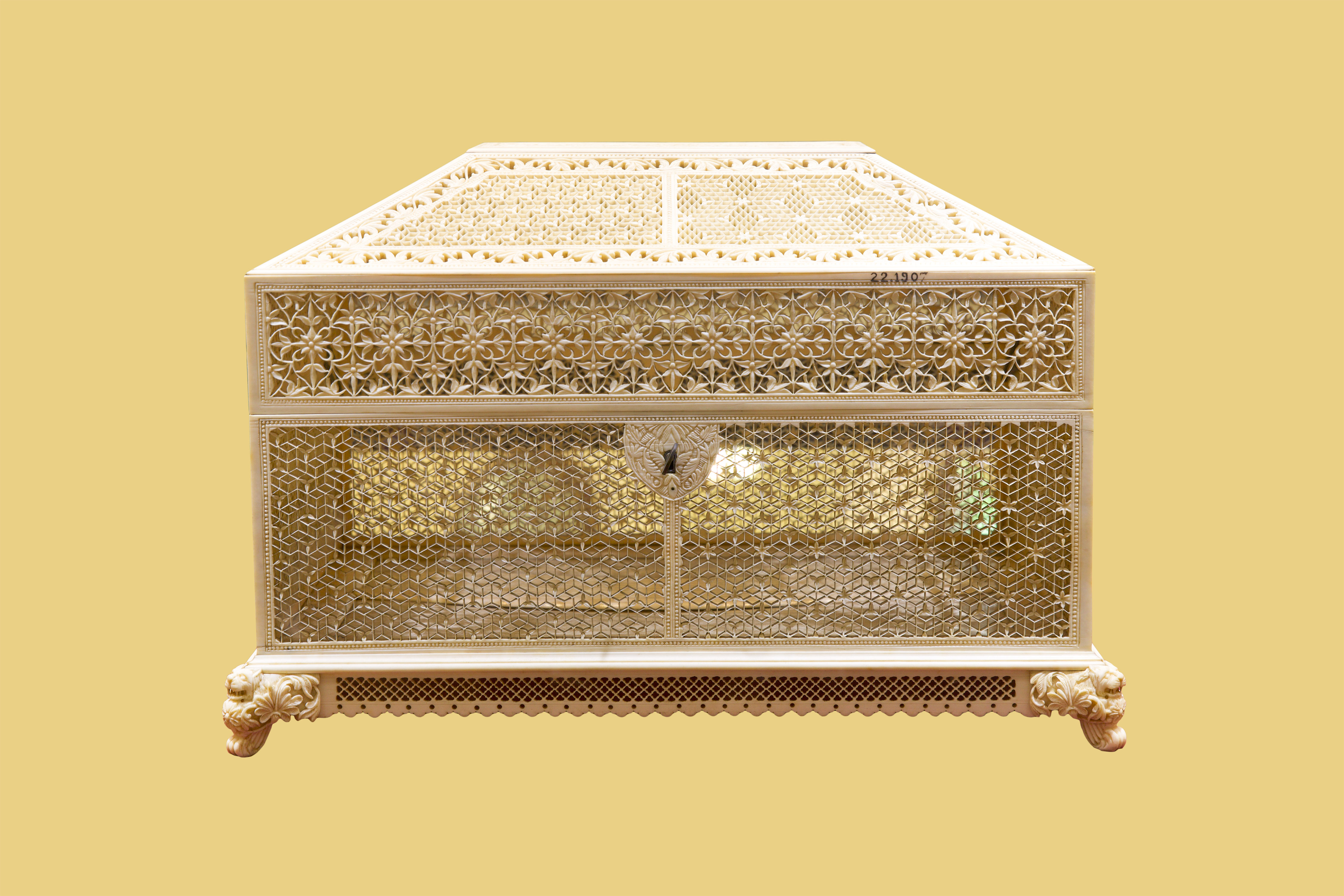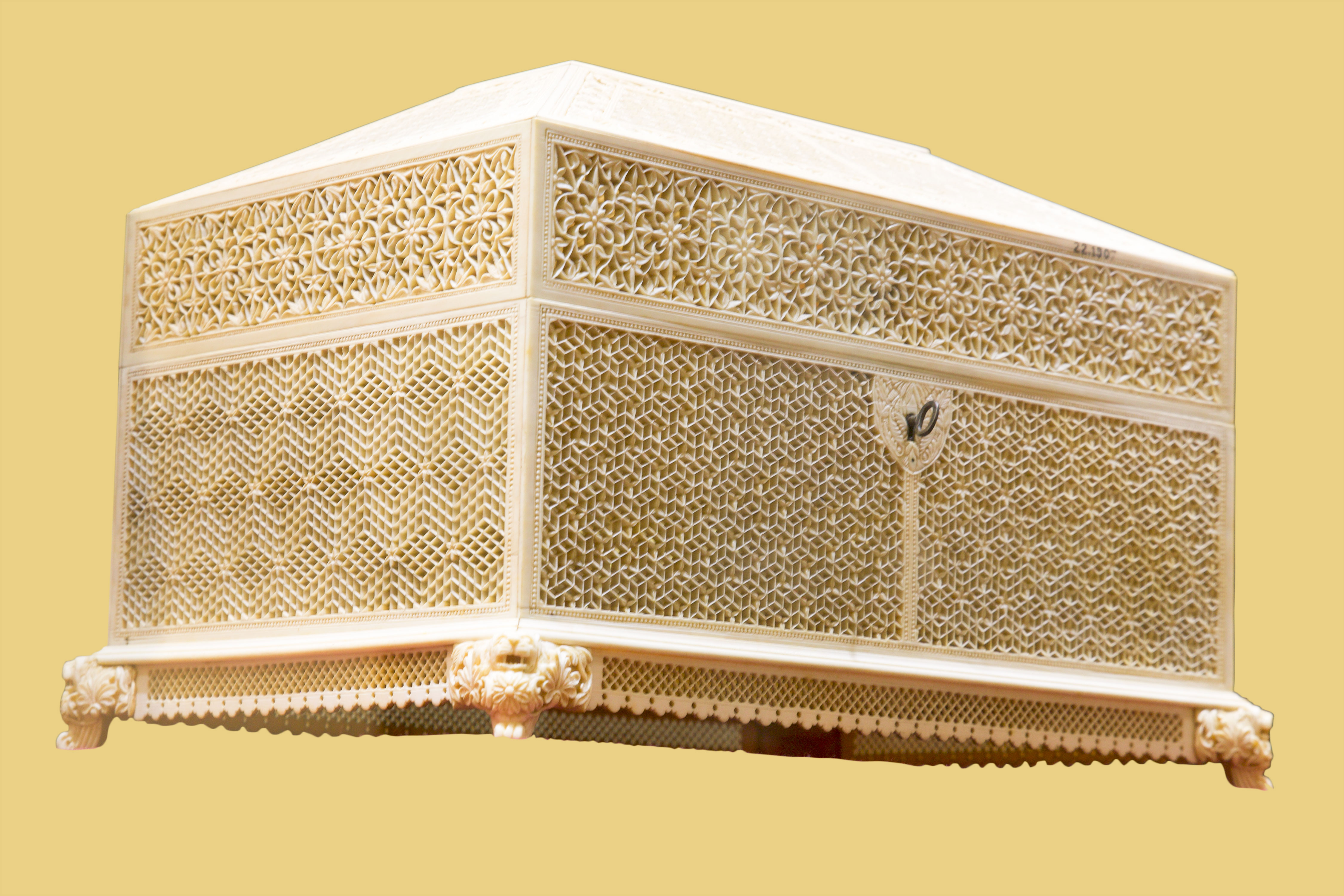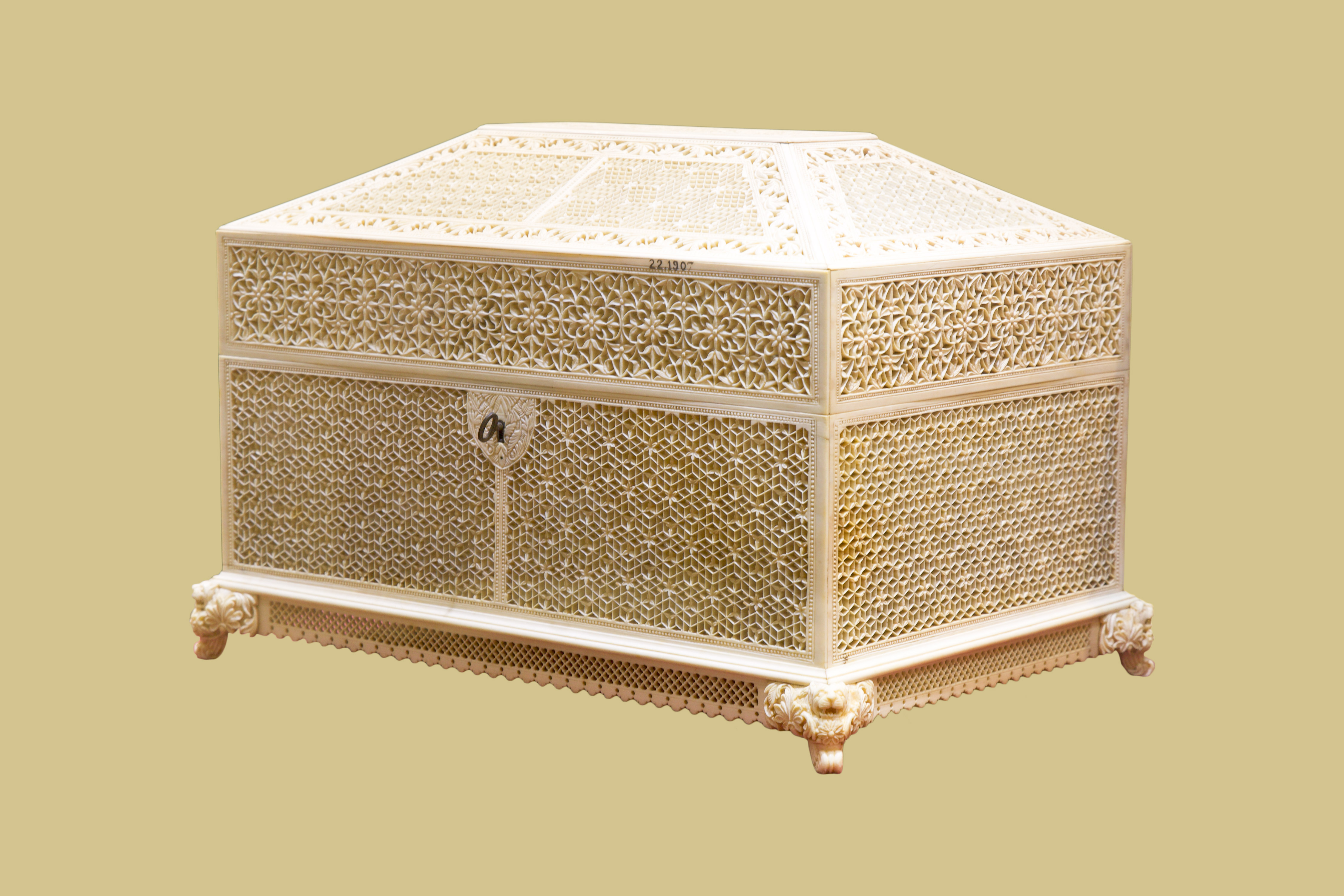Discover, Learn, immerse, Connect
Jewellery Box
India was known for ivory carving since ancient times. Delhi was one of the main centres for ivory carving during the rule of the Mughal Empire. A variety of ivory ware was produced for both decorative as well as utilitarian purposes. The art reached new heights with the use of floral motifs and intricate designs in jali or lattice work. The fascination of the Mughal kings for latticework or jalis of various geometric patterns was not confined only to architectural decorations. It also influenced the decorative art objects such as boxes, screens, paper cutters and combs. The traditional figural designs of many of the items of decorative art were replaced by elaborate geometrical patterns, thus introducing a new concept of design in this art.
The use of jewellery boxes in India is as old as the Indian fascination for jewellery. The boxes have presented opportunities for the craftsmen to display their fine skills in their execution and decoration. These boxes, though utilitarian in purpose were also popular collectors’ items. Ivory carving too has had a long tradition in India with the Murshidabad ivory items being sought worldwide. However, due to the fact that ivory carving involves the use of animal tooth or tusk, especially that of elephants, a ban has been imposed on this craft. The artisans have turned to other substitutes such as bone and sandalwood for carving.
This intricately carved rectangular box has panels with floral and geometrical patterns. The lid is pentagonal in shape with similar kind of designs and is fitted to the box with two hinges. The box rests on four legs each carved in the shape of a lion's face. A very tiny lock with key is fitted to the box. The sides have a geometrical design with a floral motif fixed on alternate joints. The other two sides and the top are similarly carved with some variations. The designs are carved out in thin sheets of ivory with commendable skill. These sheets are then skillfully joined together to make the walls and the lid of the box. From the point of view of both the design and its execution, the box is indeed a marvel of the Indian ivory carvers of the 20th century.
 Government of India
Government of India





